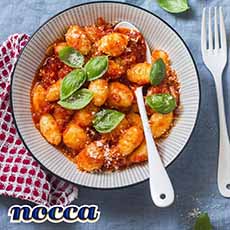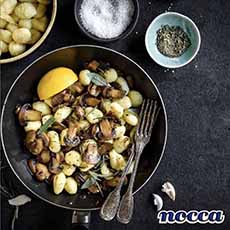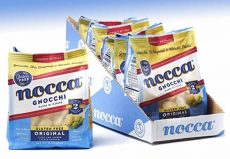|

[1] Rosé is the perfect summer wine: light yet substantial, delivering flavor and finish (photo © Herringbone Eats | Santa Monica).

[2] The rosé rainbow, in colors from the palest pink to the deepest rose (photo © Jacksonville Magazine).
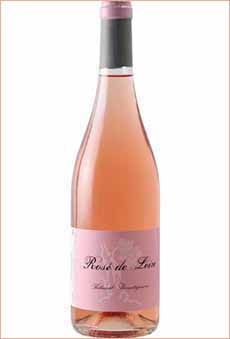 Thibaud-Boudignon-Rose[/caption] Thibaud-Boudignon-Rose[/caption]
[3] Top of the list: Thibaud Boudignon Rosé 2019 from the Loire region of France (photo © Thibauld Boudignon).
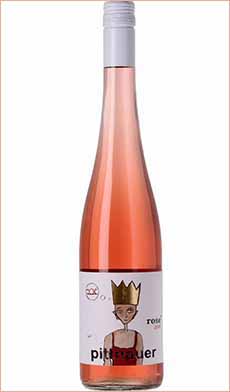
[4] The top pick from Austria is (photo © Weingut Pittnauer).

[5] (photo © Fontanafredda).

[6] Domaine Collotte is from Marsannay, the northernmost appellation of the Côte de Nuits region of Burgundy, France (photo © Domaine Collotte).

[7] Rose is delicious with fruit and cheese (photo © S.L. | Unsplash).
|
|
This summer, a very discriminating oenophile*, Ken Merrill, tried some rosé wines, from Austria, France, Germany, Greece, Italy and Spain.
The following comprise the top 25%: 10 rosés that made his list of “will buy more of these.”
The prices are from wine stores in New York City.
And, in the manner of rosé pricing, they are more than affordable: most are less than $20.
SUMMER 2020: THE TOP 10 ROSÉ WINES
Over the last few weeks, I have been trying a great many of the European rosé wines now available in New York City. It seemed like a very interesting thing to do as we headed into the height of summer, and particularly appropriate to do as we have increased the time we spend on the beautiful rooftop terrace atop our building.
There are four clear winners from three different countries, which point out that the world of rosé is quite varied, with high points usually being the surprise.
One big plus is that they were all in the lowest alcohol levels from all that we’ve had. A vivid freshness of red fruits, more strawberry and raspberry, along with herbal and mineral notes made them stand out for their clarity of expression and their lovely, light, dance-like feel.
When rosé alcohol levels get higher, it actually seems like you start to lose much more than you gain. They start to seem rather heavy and dull, lacking in that joyous, light red fruitiness that gives them their summertime appeal.
OUTSTANDING ROSÉ WINES
Thibaud Boudignon Rosé 2019 (Savennières, Loire, France)
The Thibaud Boudignon Rosé de Loire 2019 was outstanding. Savory, very complex nose and palate; it started with a light watermelon scent, alluring and mysterious, opening into lighter raspberry scents. A wonderful wine which walks that exciting tightrope of tension between salty minerals and ripe fruit. Made from 80% Cabernet Franc and 20% Grolleau, it’s at that perfect 12.5 alcohol level. Boudignon is now often touted as one of the very finest makers of dry Chenin Blanc. His Savennieres and Anjou Blanc are superb. This rosé wine which he just started making 3 years ago seems clearly to belong in that same high echelon of quality. Chambers Street has it for $22.
Weingut Pittnauer Burgenland Rosé 2019, (Gols, Austria)
Another standout was a wine from Austria that we had never heard of before, the Pittnauer Burgenland Rosé 2019. Made from mostly Blaufrankisch, it offers so much at a low 11.5 alcohol! Full bodied, red berry fruit and perfumed with alpine aromas, combined with a crisp, pleasing acidity. Available at Chambers Street for $18. A joy to find such a well made wine from someone unknown to us! And, this is his starter rosé! We have to try some of the other wines!
Fontanafredda Solerose Langhe Rosato 2018 (Piedmont, Italy)
The Fontanafredda Solerose Langhe Rosato 2018, a blend of Barbera, Dolcetto, and Nebbiolo, was another real standout. Priced at $19 at Eataly, it is an utterly charming, lovely wine, with beautiful notes of mountain flowers and strawberry, perhaps even closer to fraises des bois. And at 11.5% alcohol, it is a total winner in its balance and grace. More please!
Carrel Jongieux Vin de Savoie Rosé 2019 (Savoie, France)
The fourth real standout was a lovely wine coming from an area we tend not to think of so much, the Savoie. Carrel Jongieux Vin de Savoie Rosé 2019 is a blend of 80% Gamay and 20% Mondeuse. Also strawberry scented, it has hints of Alpine flowers and a lovely minerality. The alcohol level is 12.5%. A truly excellent value, it’s available in Manhattan for $12-$14, but Empire Wine in Albany, which has the best shipping rates in the country ($11.88 per case!) has it for $10.
Domaine Collotte Marsannay Rosé 2019 (Marsannay, Burgundy, France)
Another standout that we just tasted is the Domaine Collotte Marsannay Rosé 2019. From one of the finest producers in Marsannay, this wine was beautiful and full, hinting of strawberry and cherry. At 12.5% it has that perfect balance of full flavor, beautiful grace, and a lively, engaging personality. Excellent. At Chambers Street Wines for $21.
Domaine Olga Raffault 2019 (Chinon, Loire, France)
Another lovely rosé is that of Olga Raffault in Chinon 2019. Made from 100% Cabernet France, at 12.5% alcohol, it shows a lovely, elegant fullness on the palate. We’ve drunk her reds with great pleasure over the years, and this is a very pleasant, enjoyable rosé wine which Chambers Street Wines sells for $20.
Dr. Loosen Villa Wolf Pinot Noir Rosé 2018 (Pfalz, Germany)
Dr. Loosen Villa Wolf Pinot Noir Rosé 2018 had some very appealing elements in its bright red fruits nose, but unfortunately for me, it showed some sweetness on the palate which doesn’t suit my current palate for either white or rosé wine. But, many people would undoubtedly enjoy this very easy to drink rosé. The alcohol level is an appealing 11.5% and the wine is priced very reasonably at $10 at Warehouse Wines downtown. Definitely worth trying.
Chateau de Manissy Tavel Cuvée des Lys Rosé 2019 (Tavel, Rhone, France)
A wine with higher alcohol, a very precise 13.57%, that proved to be quite good was Chateau de Manissy Tavel Cuvée des Lys Rosé 2019. A very beautiful dark coppery pink, the Grenache based wine had a shy nose, but a wonderful fullness on the palate. Very much a food wine, not for just sipping. A lovely bottle. Available at Chambers Street Wines for $18.
Lecci e Brocchi Il Meticcio Toscana Rosato 2019 (Siena, Tuscany, Italy)
The Lecci e Brocchi Il Meticcio Toscana Rosato 2019 was an interesting bottle in the way it developed. At 13.0% alcohol, on the first day it was very tart and lemony, maybe too much so. A lovely color from the blend of Tuscan grapes: Sangiovese, Malvasia Nera, Alicante, Foglia Tonda, Colorino, and Canaiolo Nera, presumably explaining the name of the wine, the Italian word for a cross breed horse. On day two, however, it became beautifully full, richer and more cherry-like. Definitely a wine to try, but I would suggest decanting it to give it its fullness of flavor. Available for $20 at Chambers Street Wines.
Campo Alle Comete Bolgheri Rosato 2018 (Bolgheri, Tuscany, Italy)
The Campo Alle Comete Bolgheri Rosato 2018 was another quite delicious rosé. Quite full in flavor, particularly for its 12.5% alcohol. Slightly herbal, raspberry nose. Even better the second day. With medium body, it’s a real food wine for sure—not just for sipping on the terrace. A blend of 50% Merlot, plus 25% each Cabernet Sauvignon and Syrah. They have it at Eataly for $20.
MORE WAYS TO ENJOY ROSÉ…
…but don’t use the stellar rosés above for any of these. You can use a perfectly good $10 bottle of rosé.
Rosé Sangria
Affordable Sparkling Rosé
Frozen Rosé Cocktails
Rosé Milkshakes
FOOD & WINE TRIVIA
Dry rosé wine is the all-occasion wine in the south of France—no surprise, since Provence is the world base of dry rosé production. There, vin rosé is paired with all the foods, all year around.
In fact, dry French rosé outsells white wine in France!
The dry rosés from Provence can be substituted any time you need dry wine. When you can’t decide between red or white wine, reach for the rosé.
> What Is Rose Wine & Why Should You Be Drinking It?
> The History Of Rosé Wine
> Have A Rosé Tasting Party
> Rosé Wine & Food Pairings
|
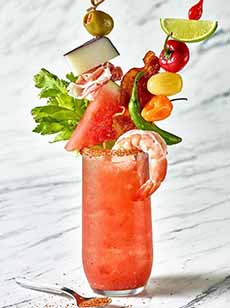

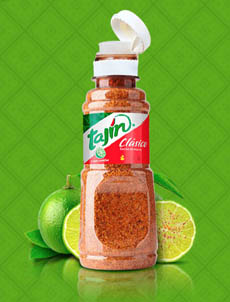


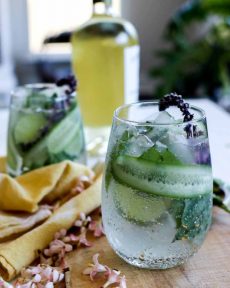
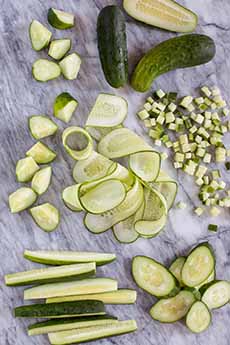
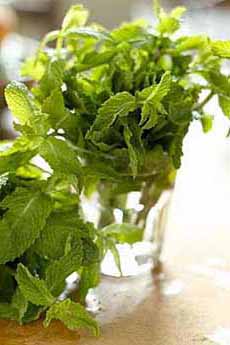

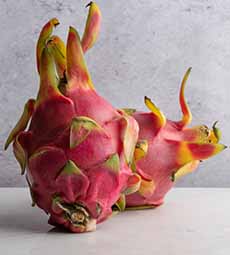


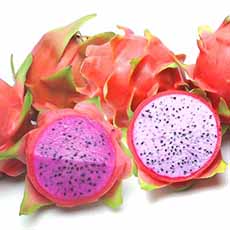


 Thibaud-Boudignon-Rose[/caption]
Thibaud-Boudignon-Rose[/caption]




